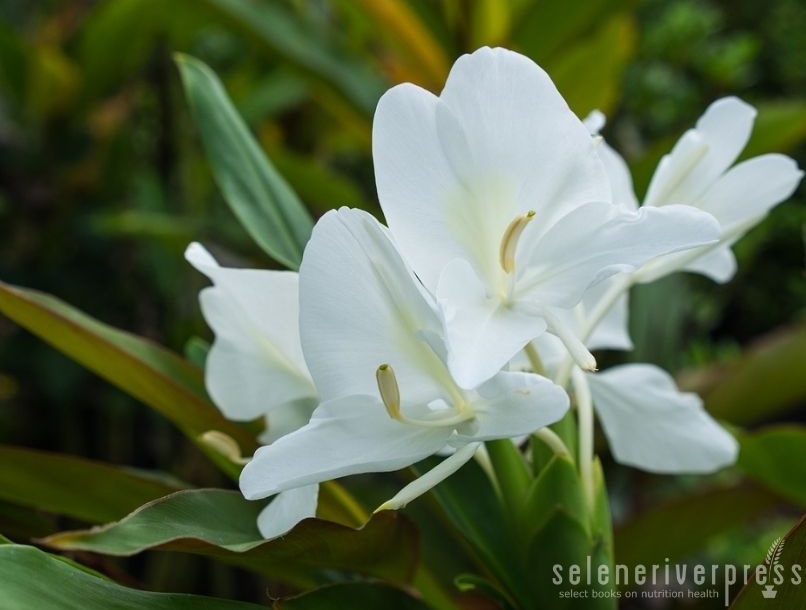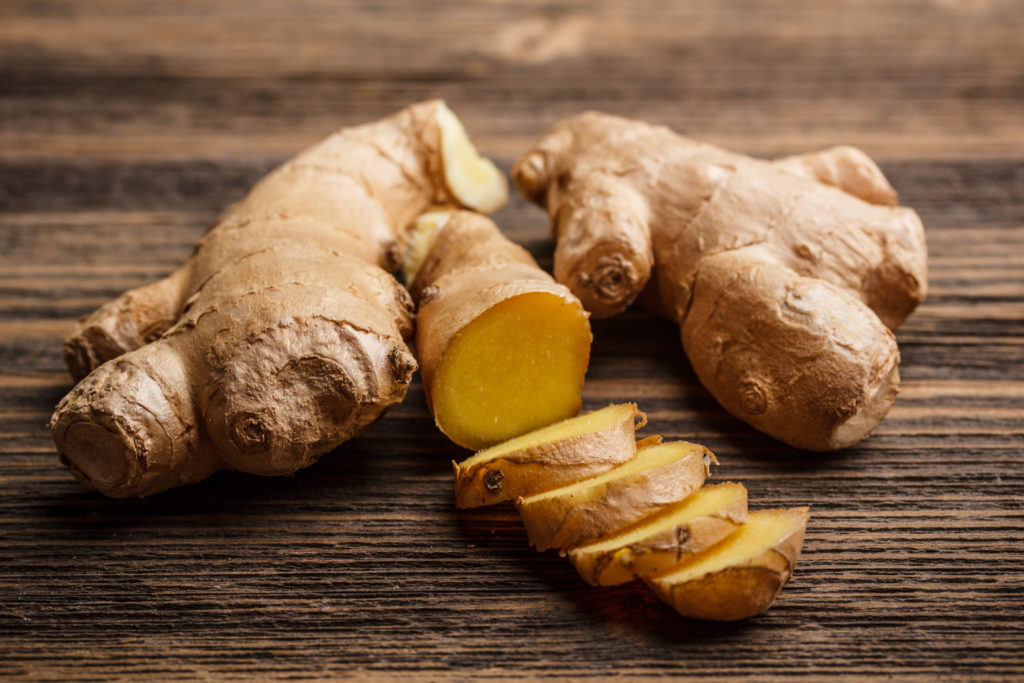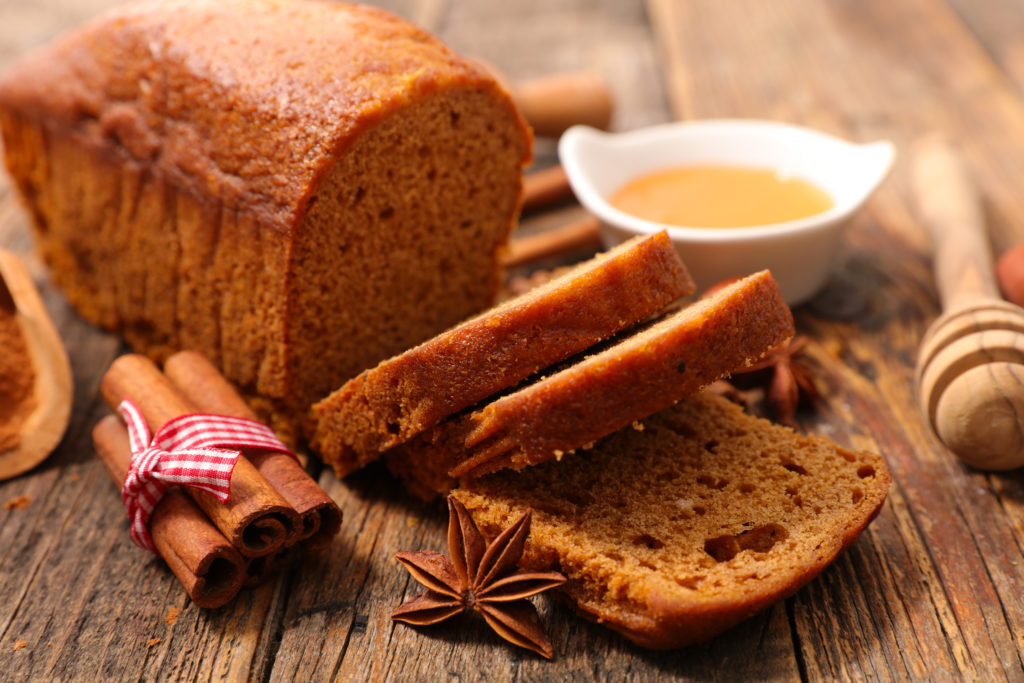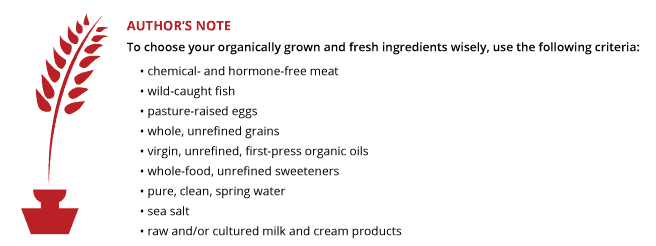In my recent blog post “The Phenomenal Cranberry,” I wrote about the tremendous health properties of cranberries and their traditional appearance during celebrated American holidays, but especially Thanksgiving. In this, my latest holiday contribution, I want to focus on ginger for the Christmas or Hanukah table. Many of you have probably graced your tables with time-tested gingerbread recipes for decades. Nevertheless, it’s always good to pick up a new recipe to add to your family’s legacy, especially one that even the novice baker will find super easy to prepare.
While searching for the perfect gingerbread, I discovered exactly the spice I was looking for! Yes, this unique gingerbread spice blend from Spices, Inc., will help you avoid the hassle of buying the many different spices you would normally need for the final product. It’s a combination of ginger, cinnamon, clove, nutmeg, black pepper, and allspice—and the fun part is that it comes in the perfect proportions! And it’s not just for gingerbread. Use if for making cookies, cakes, and gingerbread houses; sprinkle it over your favorite vanilla ice cream; or add a bit to your smoothie. You can even add a dash to your hot winter squash, and do so much more.
But wait! Before you run off to buy some gingerbread spice, there is much I want to tell you about the origins of ginger and its highly unique medicinal properties. Let’s explore this blessed spice so you can share the story when you serve the delicious gingerbread recipe I include below.
There are many interesting facts about what we call ginger root, beginning with the fact that it is not a true root at all but rather a rhizome. However, for this post we will continue calling it ginger root, as that’s what we mostly hear and can picture in our minds.
Origins and History of Ginger
The beautiful flowering ginger plant gives us the precious ginger root that we use both in cooking and herbal medicine. It originated in ancient China before spreading to India and the Maluku Islands—which used to be called the “Spice Islands” because of the nutmeg, mace, and cloves that were exclusively found there, sparking colonial interest from Europe in the sixteenth century.
It is said that when Rome fell, Europe forgot about ginger, and it wasn’t rediscovered again until Marco Polo brought it back after his travels in the East. Ginger was eventually brought to the Caribbean, where it grows with ease. However, India is now the greatest producer of this spice in the world. This is just a brief summation of the history of ginger, but you can find many articles online that present a fuller picture.
The Many Medicinal Uses of Ginger
Growing up was an herbal experience for me since my mother was the consummate herbalist (and also an organic gardener, cook, and stay-at-home mom). It wasn’t just herbs—she grew huge gardens with every wonderful vegetable, which would eventually land in Mason jars lining the shelves of our basement as we waited for the cold winter months. My mother used ginger every morning in her cup of coffee, with a touch of honey. I also vividly remember the many times she made me or my brother a cup of ginger tea with honey when we came down with a cold.
Eventually, this tea became a habit for me, and I have it every morning. I start by grating fresh, unpeeled ginger root into tiny pieces with my vegetable grater. I then add it to two cups of boiling spring water and let it steep for at least ten minutes before draining it. (This tea makes an excellent healthy substitute for that cup of coffee, which may be the most destructive beverage you can drink.)
It’s been my good fortune that I don’t have any digestive issues, and I believe this great health benefit is due to my ginger tea. WebMD documents many other health benefits of ginger in this slideshow. Below I quote ten of them. I hope you find this valuable information that will help you begin using this powerful spice:
Keeps your mouth healthy: “Ginger’s antibacterial power may also brighten your smile. Active compounds in ginger called gingerols keep oral bacteria from growing. These bacteria are the same ones that can cause periodontal disease, a serious gum infection.”
Calms nausea: “Ginger helps if you’re trying to ease a queasy stomach, especially during pregnancy. It may work by breaking up and getting rid of built-up gas in your intestines. It might also help settle seasickness or nausea caused by chemotherapy.”
Soothes sore muscles: “Ginger won’t whisk away muscle pain on the spot, but it may tame soreness over time. In some studies, people with muscle aches from exercise who took ginger had less pain the next day than those who didn’t.”
Eases arthritis symptoms: “Ginger is an anti-inflammatory, which means it reduces swelling. That may be especially helpful for treating symptoms of both rheumatoid arthritis and osteoarthritis. You might get relief from pain and swelling either by taking ginger by mouth or by using a ginger compress or patch on your skin.”
Curbs cancer growth: “Some studies show that bioactive molecules in ginger may slow down the growth of some cancers like colorectal, gastric, ovarian, liver, skin, breast, and prostate cancer. But much more research is needed to see if this is true.”
Lowers blood sugar: “One recent small study suggested that ginger may help your body use insulin better. Larger studies are needed to see if ginger could help improve blood sugar levels.”
Eases period pains: “Got menstrual cramps? Ginger powder may help. In studies, women who took 1,500 milligrams of ginger powder once a day for 3 days during their cycle felt less pain than women who didn’t.” (Note: Organic Ground Ginger is available from Spices, Inc.)
Lowers cholesterol: “A daily dose of ginger may help you battle your ‘bad’ or LDL cholesterol levels. In a recent study, taking 5 grams of ginger a day for 3 months lowered people’s LDL cholesterol an average of 30 points.”
Protects against disease: “Ginger is loaded with…compounds that prevent stress and damage to your body’s DNA. They may help your body fight off chronic diseases like high blood pressure, heart disease, and diseases of the lungs, plus promote healthy aging.”
Relieves indigestion: “If you live with chronic indigestion, also called dyspepsia, ginger could bring some relief. Ginger before meals may make your system empty faster, leaving less time for food to sit and cause problems.”
And now for a recipe for Gingerbread Spice Cake!
Gingerbread Spice Cake
—Recipe slightly adapted from Spices, Inc., to make use of healthier ingredients. See original version here.
Ingredients
⅔ cup organic coconut sugar or organic muscovado sugar
⅔ cup organic molasses
⅔ cup boiling water
¼ cup plus 2 tablespoons unsalted butter, cubed and chilled
1 teaspoon baking soda
½ teaspoon kosher salt
1 large pastured organic egg
1½ cups white whole wheat flour
2 tablespoons Gingerbread Spice Blend
Ground coconut sugar or powdered monkfruit for dusting the cake (optional)
Instructions
- Preheat oven to 350°F. In a medium-size mixing bowl, whisk together coconut or muscovado sugar, molasses, boiling water, and butter, until butter melts. Whisk in baking soda and salt and let stand until cooled. Whisk in egg.
- In a large mixing bowl, whisk together flour and Gingerbread Spice Blend. Add wet mixture. Whisk until smooth and well incorporated.
- Grease a 9-inch pan with butter, and then flour. Pour mixture into pan. Bake 20–25 minutes, or until a toothpick placed in the center of the cake comes out clean. Remove cake from oven and cool in pan for around 10 minutes and then place on cooling rack.
- If you would like to dust the cake, grind some organic coconut sugar in the blender until powdered, and use in lieu of powdered sugar to sprinkle over the top. (Or you may try powdered monkfruit.)
Afterthoughts from the Traditional Cook
Sometimes the answer to our deepest concerns can be found in a chance reading of an article such as this, or other resources that explain how Mother Nature has provided us with spices, herbs, and some culinary foods that can help us heal from serious, ongoing health issues. Maybe tomorrow you will go to your local health food store and pick up a few of those precious organic ginger roots. Grate them and start spicing your dishes with this warm, earthy, and profoundly healthy God-given gift.
Be blessed and have a quiet, healthy holiday season
—Maria Atwood, CNHP
[xyz-ihs snippet=”End-Authors-Note”]Disclaimer from Maria Atwood, CNHP: I am a Certified Natural Health Professional, CNHP, not a medical doctor. I do not diagnose, prescribe for, treat, or claim to prevent, mitigate, or cure any human diseases. Please see your medical doctor or health practitioner prior to following any recommendations I make in my blog posts or on my website.
Images from iStock/wichatsurin (main), grafvision (ginger root), margouillatphotos (gingerbread)






